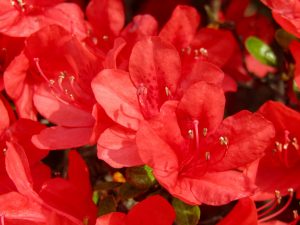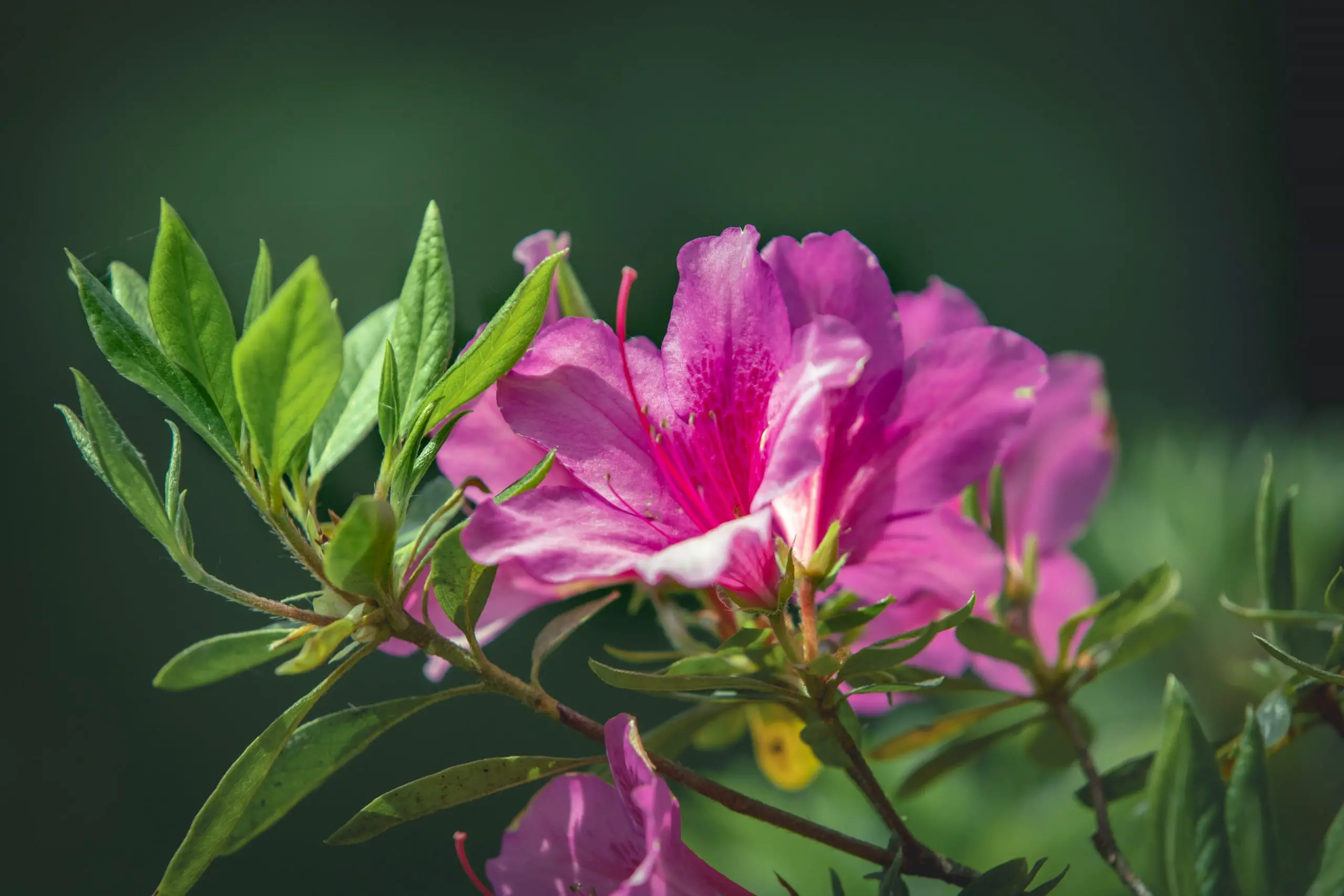Last Updated on April 16, 2024 by Real Men Sow
Popular flowering shrubs are the azaleas. There are many cultivars available, and the flower colors range from pinks and violets to reds, oranges, and yellows. The Azaleas can be grown in a shaded area or in a woodland border, but they also thrive in pots. Some azaleas, also known as greenhouse azaleas, can be grown as houseplants. Let’s dive in how to grow azaleas in pots and outdoors to make your flower gardens thrive!

How To Grow Azaleas in Pots and Outdoors
You can grow azaleas outdoors in a sunny spot with partial or full shade. Shaded or woodland borders are ideal for most varieties. You can also grow azaleas in pots. Indoors, grow Azaleas in cool, well-ventilated places in bright sunlight but not direct sun.
What’s the Best Soil for Azaleas?
All azaleas need humus-rich soil that is neutral to acidic, well-drained, and moist. To determine the pH of your soil, you can use a test kit or check out neighboring gardens. If your soil is alkaline, you should avoid planting azaleas. For azaleas in containers, use peat-free ericaceous soil.
Azaleas have shallow roots so ensure that the root ball is just below the surface. Fill the hole with peat-free ericaceous soil and leaf mould. Make sure to water well.
Mulch azaleas with an acidic mixture of leaf mould, conifer bark chippings or peat-free Ericaceous Compost. Pot-grown azaleas (including indoor azaleas) should be replaced with a layer of compost or repot in spring. Fertilize with an ericaceous fertilizer. Rainwater is best as it can be. Tap water may be too acidic. Pruning should not be necessary.
Although it is unlikely, do not grow azaleas if you own pets because they can be poisoned by it. They can cause nausea, vomiting and depression as well as difficulty breathing and even coma. If consumed in sufficient quantities, they can cause death in dogs.
Where to Plant Azaleas
Azaleas grown outdoors could be in a sunny spot, in partial shade, or in full sun. Many cultivars are best planted at the edges of a forest border or in shady areas. The best place to plant smaller varieties is at the border or in pots.
Azaleas grown indoors should be in a room that is well ventilated and receives indirect or dappled sunlight. The ideal temperature is between 16-18ºC.
Steps to Plant Azaleas in Pots
Azaleas need humus-rich soil, which is neutral to acidic and moist, but well-drained, just like rhododendrons. For pot-grown azaleas, you can use ericaceous compost that is peat-free. These plants are shallow-rooted, so ensure that the root ball is just below the surface. Fill the hole with ericaceous and leaf mould then Water the plants well with rainwater.
Taking Care of Azaleas
Mulch outdoor Azaleas with an acidic mixture of conifer bark chippings or leaf mould every year. Pot-grown and indoor Azaleas can be repotted with an acidic mix of leaf mould or conifer bark chippings. They also need to be fed weekly with an ericaceous fertilizer. Keep the compost moist but make sure to use rainwater if you can because tap water might be too acidic. Pruning is not necessary, but it will make your azalea look better and encourage blooms to last longer.]
What to do with Azaleas in Pots?
Many pot-grown azaleas can be gifted at Christmas as house plants. These plants are often out of season and can be difficult to maintain. To get the best results, keep the compost moist. It is worth soaking the pot in water for a few minutes every other day. For azaleas, a weaker solution of black tea may be beneficial as it can increase the compost’s acidity. To prolong flowering, deadhead spent blooms and keep them in a cool place for the remainder of the year. Feed your azaleas weekly to encourage flowering in the next summer. Then, repot as previously mentioned. In late autumn, you can move your azalea into a cooler room (6ºC-10ºC), and then return it to a bright, cool room (16ºC-18ºC) during spring. Your azalea will soon flower again if you are lucky.
Propagating Azaleas
You can grow azalea species from seeds. To propagate cultivars however, cuttings are the best choice. From mid- to late summer, take semi-ripe heels and place them in a pot of gritty ericaceous soil. When the cuttings begin to grow, cover them with a plastic bag. Rooting powder can increase your chances for success.

